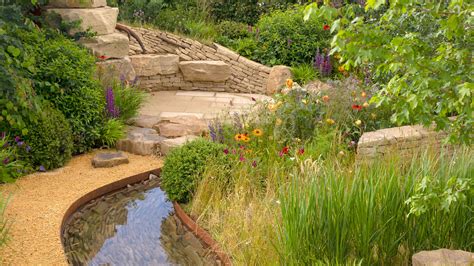Transforming Your Balcony into a Wildlife-Friendly Oasis
Urban living doesn’t have to mean a disconnect from nature. Balcony gardening presents a unique opportunity to foster biodiversity, even in small spaces. By making your balcony garden wildlife-friendly, you can support urban ecosystems while enjoying the beauty of nature from the comfort of your home. This guide explores practical strategies for attracting wildlife, maintaining biodiversity, and creating a thriving mini-ecosystem on your balcony.
Introduction
Balcony gardening is gaining popularity, especially among city dwellers looking to create green spaces in limited areas. But beyond growing plants for aesthetic or personal consumption, balcony gardens can serve a greater purpose by attracting wildlife. A well-planned wildlife-friendly balcony can attract birds, bees, butterflies, and other small creatures that contribute to the health of the urban ecosystem. In this guide, we’ll explore key concepts and practical tips for creating a wildlife-friendly space, suitable for beginners and seasoned gardeners alike.
Key Concepts
- Biodiversity: The variety of plant and animal species within a particular environment.
- Wildlife corridors: Small, connected areas that allow wildlife to move through urban spaces.
- Container gardening: Growing plants in pots, containers, or other enclosed spaces, ideal for balconies.
- Native plants: Species that occur naturally in a region and support local wildlife more effectively than non-native plants.
Historical Context
Urban gardening and balcony gardening emerged as a response to increasing urbanization and the need for accessible green spaces. Historically, gardening has been an activity associated with large rural or suburban yards. However, as cities expanded, the need to integrate nature into urban settings grew. From the rooftop gardens of ancient Mesopotamia to the window boxes of modern apartments, humans have always found ways to cultivate plants in small spaces. In recent decades, there’s been a growing recognition of the importance of urban biodiversity and the role that even small-scale gardens can play in supporting wildlife.
Current State Analysis
With urban areas expanding, natural habitats for wildlife are shrinking. Balcony gardening is one of the few ways city dwellers can contribute to preserving biodiversity. Small space gardening can provide shelter, food, and water for various species, from pollinators like bees to urban birds. However, it requires careful planning and the use of appropriate techniques to be effective. Challenges include limited space, lack of direct ground contact, and potential harm from pollutants or unsuitable plants. Still, with the right strategies, these hurdles can be overcome.
Practical Applications
- Choosing the right plants: Opt for native plants, which are better suited to support local wildlife.
- Water sources: A small water dish or birdbath can provide essential hydration for birds and insects.
- Providing shelter: Use small trees, bushes, or birdhouses to create hiding spots for wildlife.
- Pollinator-friendly plants: Lavender, marigold, and echinacea are great choices for attracting bees and butterflies.
- Layering plant heights: Create a diverse environment by using plants of varying heights to mimic natural habitats.
Case Studies
| Location | Strategy | Results |
|---|---|---|
| New York City, USA | Native plants in containers, birdhouses, and a small water feature | Increased bird visits, including local sparrows and finches |
| Berlin, Germany | Vertical gardening, wildflowers, and pollinator-friendly species | Boost in bee and butterfly populations observed over one summer |
| Sydney, Australia | Layered planting with a mix of shrubs, herbs, and small trees | Frequent visits from lizards, birds, and native insects |
Stakeholder Analysis
Creating a wildlife-friendly balcony garden has an impact on various stakeholders, both human and non-human. Gardeners benefit from a sense of connection with nature, while wildlife gains much-needed habitats. Neighbors can enjoy the visual appeal of greenery and might experience reduced air pollution. However, there could be concerns over pests, or overgrowing plants affecting shared spaces.
Implementation Guidelines
- Start with native plants: Research which species are native to your area and begin by incorporating them into your garden.
- Use vertical space: Maximize space by adding trellises, hanging baskets, or tiered plant stands to grow a variety of plants.
- Install birdhouses and insect hotels: These provide crucial nesting spaces for local wildlife.
- Avoid chemical pesticides: Use organic alternatives to avoid harming wildlife.
- Keep water sources clean: Regularly change water to avoid mosquitoes or disease transmission among birds.
Ethical Considerations
When creating a wildlife-friendly garden, it’s important to consider the ethical implications. Supporting biodiversity in urban areas benefits the environment, but attracting wildlife can also introduce risks. For instance, providing food or water for animals can make them reliant on human-provided resources. To mitigate this, create a self-sustaining ecosystem by planting species that naturally provide for wildlife, rather than relying on supplementary feeding. Additionally, be cautious about attracting invasive species that might disrupt the local ecosystem.
Limitations and Future Research
While balcony gardens are beneficial for supporting urban wildlife, there are some inherent limitations. For example, space constraints limit the types of species that can be attracted, and the lack of soil contact can pose challenges for certain plants. Future research could explore innovative ways to increase the impact of small space gardening on urban biodiversity, such as through communal rooftop gardens or more advanced vertical gardening systems. Additionally, studies could investigate the long-term effects of wildlife-friendly urban gardens on local ecosystems and biodiversity health.
Expert Commentary
Experts in urban gardening and biodiversity have observed that balcony gardening can serve as a critical component of broader urban biodiversity strategies. “By creating small pockets of green in otherwise concrete-dominated spaces, city dwellers can help bridge the gap between fragmented natural habitats,” says Dr. Elaine Thompson, an expert in urban ecology. She adds, “It’s amazing to see how quickly wildlife responds when provided with even the smallest resource, like a flowering plant or a shallow water dish.”
Gardening expert Samuel Jenkins also notes that balcony gardens offer more than just ecological benefits: “Gardening in small spaces can be deeply rewarding, both for personal well-being and for the environment. It’s a way for people to reconnect with nature, even in the heart of a city.”


